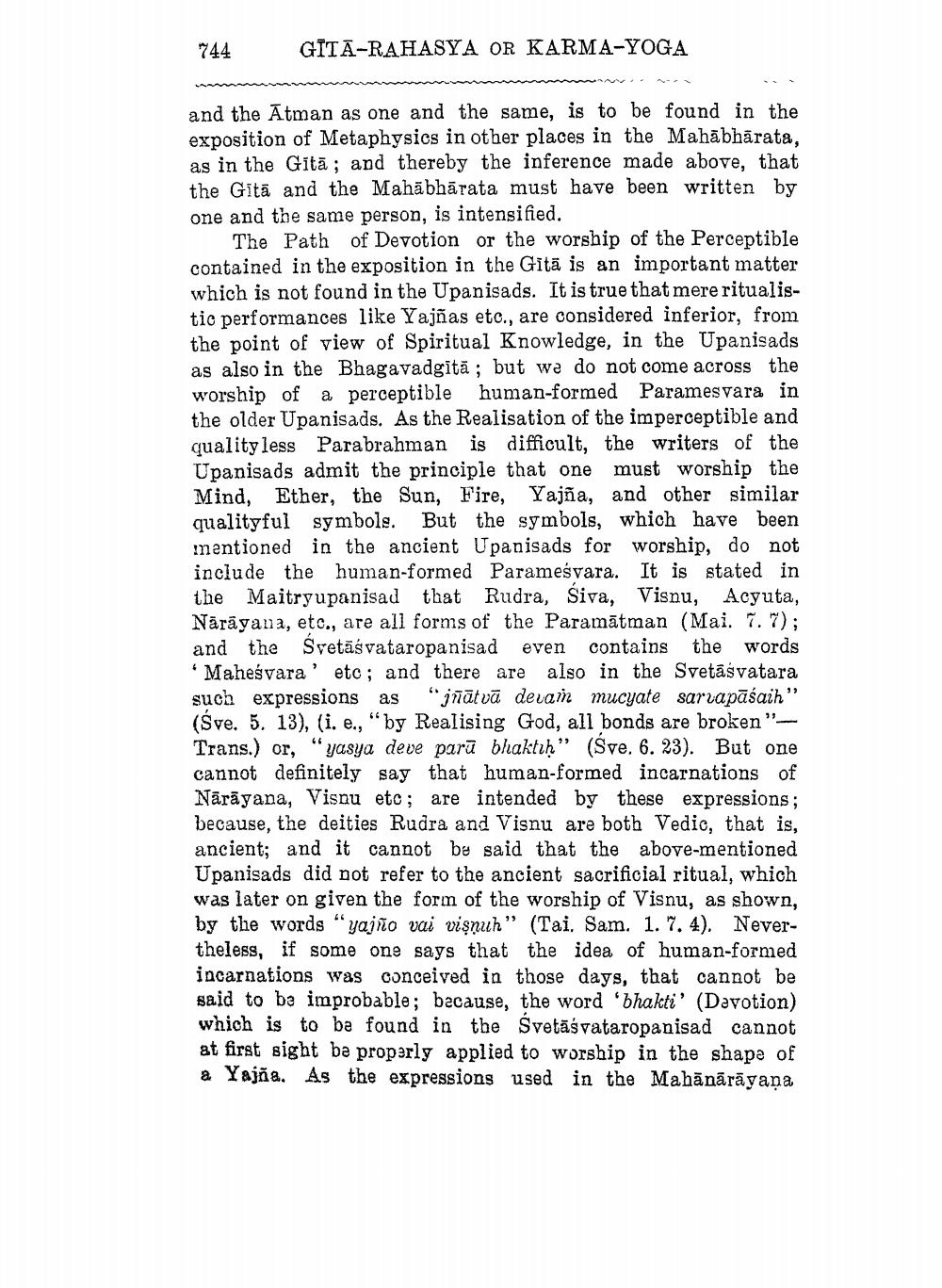________________
744
GITĀ-RAHASYA OR KARMA-YOGA
and the Ātman as one and the same, is to be found in the exposition of Metaphysics in other places in the Mahābhārata, as in the Gitā; and thereby the inference made above, that the Gitā and the Mahābhārata must have been written by one and the same person, is intensified.
The Path of Devotion or the worship of the Perceptible contained in the exposition in the Gitā is an important matter which is not found in the Upanisads. It is true that mere ritualistio performances like Yajñas etc., are considered inferior, from the point of view of Spiritual Knowledge, in the Upanisads as also in the Bhagavadgitā; but we do not come across the worship of a perceptible human-formed Parames vara in the older Upanisads. As the Realisation of the imperceptible and quality less Parabrahman is difficult, the writers of the Upanisads admit the principle that one must worship the Mind, Ether, the Sun, Fire, Yajña, and other similar qualityful symbols. But the symbols, which have been Inentioned in the ancient Upanisads for worship, do not include the human-formed Parameśvara. It is stated in the Maitryupanisad that Rudra, Siva, Visnu, Acyuta, Nārāyana, etc., are all forms of the Paramātman (Mai. 7.7°); and the Svetāśvataropanisad even contains the words
Maheśvara' etc; and there are also in the Svetāśvatara such expressions as “jñātvā devam mucyate sarvapāśaih" (Šve. 5. 13), (i. e., "by Realising God, all bonds are broken"Trans.) or, "yasya deve parū bhakth" (Sve. 6. 23). But one cannot definitely say that human-formed incarnations of Nārāyana, Visnu etc; are intended by these expressions; because, the deities Rudra and Visnu are both Vedio, that is, ancient; and it cannot be said that the above-mentioned Upanisads did not refer to the ancient sacrificial ritual, which was later on given the form of the worship of Visnu, as shown, by the words "yajño vai vişnuh" (Tai. Sam. 1. 7. 4). Nevertheless, if some one says that the idea of human-formed incarnations was conceived in those days, that cannot be said to be improbable; because, the word 'bhakti' (Davotion) which is to be found in the Svetāśvataropanisad cannot at first sight be properly applied to worship in the shape of a Yajña. As the expressions used in the Mahānārāyana




